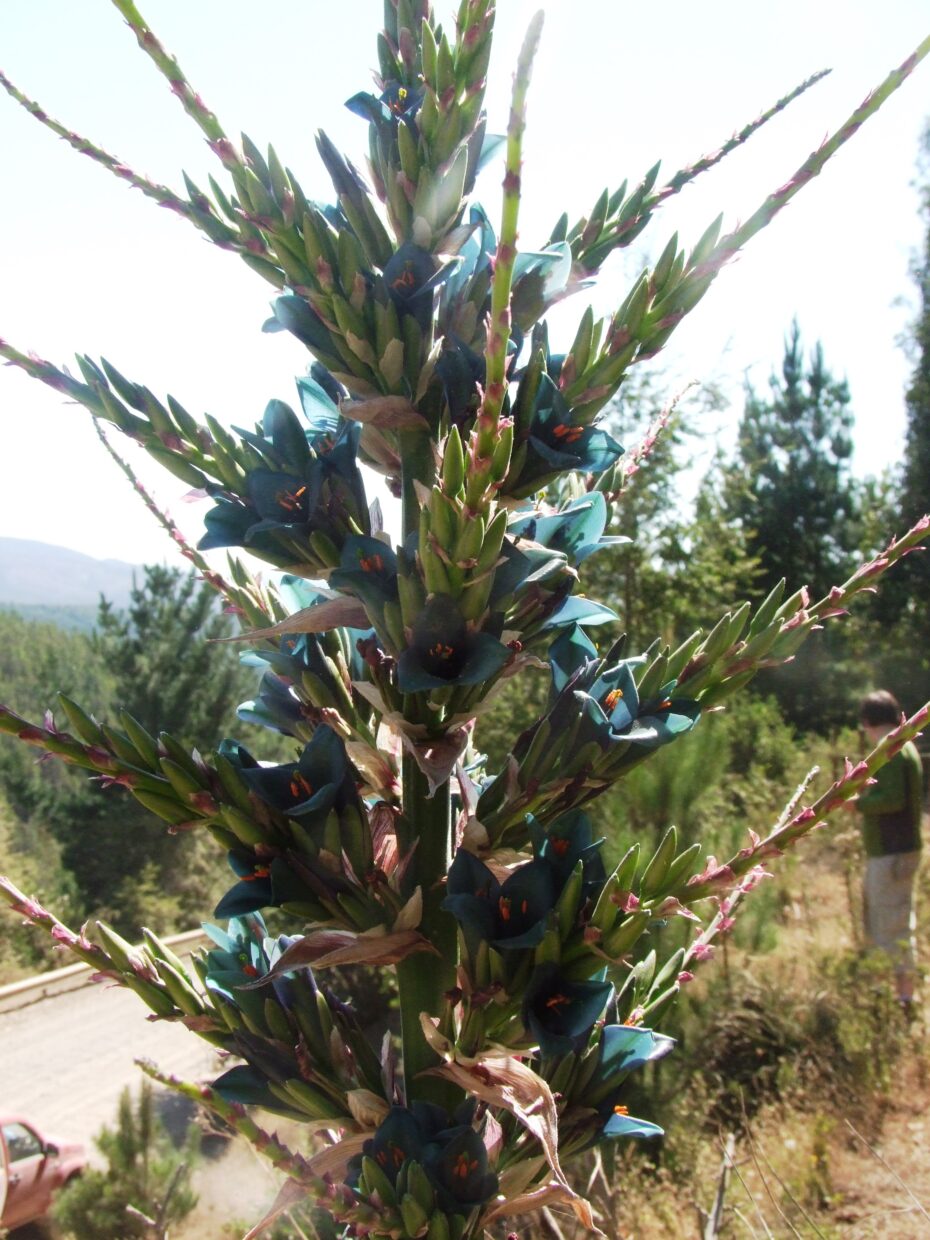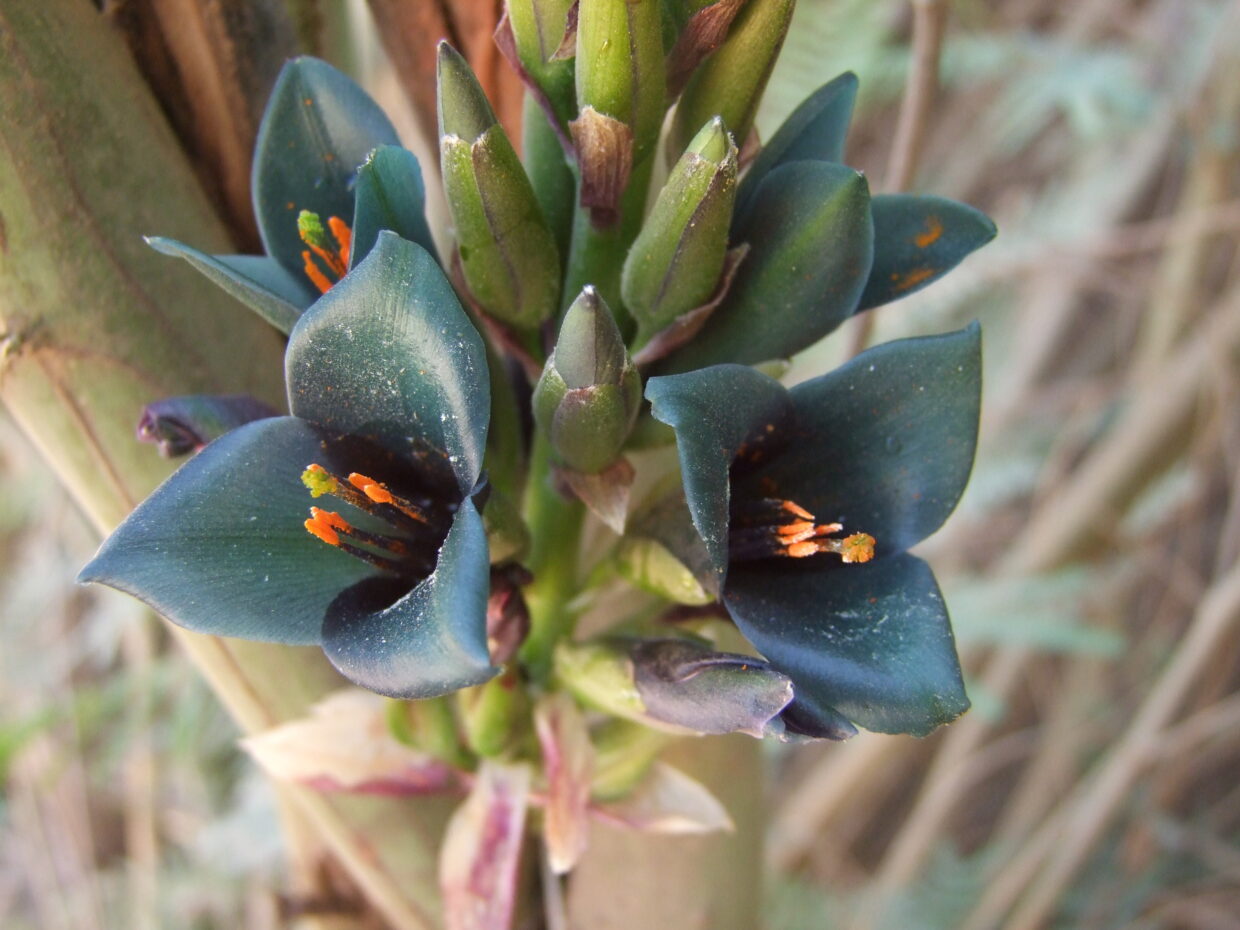Place of Publication
Fl. Chil. [Gay] 6: 12 (1853)
Type citation
“Biobío: in der Nähe von Antuco, Cuesta del Prado, Feb 1829, E. F. Poeppig 93” (holotype: W, destroyed; lectotype, designated by Smith & Downs, 1974: BM; isotypes: B, G, HAL).
Synonyms
- Pitcairnia coerulea auct. non Benth .
- Pourretia alpestris Poepp
- Puya pumila Ravenna
- Puya whytei Hook.f.
Common names
- chagual (Zizka et al. (2013))
References
-
Zizka et al. (2013)
Zizka, G. , Schneider, J.V. , Schulte, K. and Novoa, P. 2013. Taxonomic revision of the Chilean Puya species (Puyoideae, Bromeliaceae), with special notes on the Puya alpestris-Puya berteroniana species complex. Brittonia 65 (4), 387-407.
-
Zizka et al. (2009)
Zizka, G. , Schmidt, M. , Schulte, K. , Nova, P. , Pinto, R. and König, K. 2009. Chilean Bromeliaceae: diversity, distribution and evaluation of conservation status. Biodiversity and Conservation 18: 2449-2471
-
Gay (1853)
Gay, C. 1853. Historia física y política de Chile: Botánica, vol. 6:5-551. Paris & Chile (Museo Historia Natural de Santiago)
-
Smith & Downs (1974)
Smith, L.B. and Downs, R.J. 1974. Flora Neotropica Monograph 14 Pitcairnioideae (Bromeliaceae)
Regions
Coquimbo, Valparaíso, Metropolitana, Del General Libertador Bernardo O'Higgins, Maule, Biobío, Araucanía and Ñuble
Distribution and habitat
Distributed in central Chile from about 50 km east of Linares, Paso Pehuenche (Region Maule) to east of Temuco, Lonquimay (Region Araucanía ), from sea level to 2000 m. This subspecies is especially abundant in Regions Biobio and Araucania. It frequents the more humid, seasonal Mediterranean areas with sclerophyllus vegetation (Zizka et al., 2013).
Distribution
-
Puya alpestris (Poepp.) Gay ssp. alpestris
-
-
Puya alpestris (Poepp.) Gay ssp. alpestris
-
-
Puya alpestris (Poepp.) Gay ssp. alpestris
-
-
Puya alpestris (Poepp.) Gay ssp. alpestris
-
-
Puya alpestris (Poepp.) Gay ssp. alpestris
-
-
Puya alpestris (Poepp.) Gay ssp. alpestris
-
-
Puya alpestris (Poepp.) Gay ssp. alpestris
-
-
Puya alpestris (Poepp.) Gay ssp. alpestris
-
-
Puya alpestris (Poepp.) Gay ssp. alpestris
-
-
Puya alpestris (Poepp.) Gay ssp. alpestris
-
-
Puya alpestris (Poepp.) Gay ssp. alpestris
Here is #map_1 -
-
-
-
-
-
-
-
-
-
Conservation status
- Least Concern (Zizka et al. (2009))
Descriptions
- Smith & Downs (1974)
- Zizka et al. (2013)
Habit
Rosette forming with flowering stems 1.2–2.5 m tall. Flowering between October and December.
Key characteristics
P. alpestris subsp. alpestris flowering stems are 1.2-15 m tall (2.5-5m in subsp. zoellneri). It also differs from subsp. zoellneri by having leaf blades 15-25 mm wide (up to 50 mm in subsp. zoellneri) and an laxly branched inflorescences with only 20 lateral branches, instead of 60 in subspecies zoellneri.






